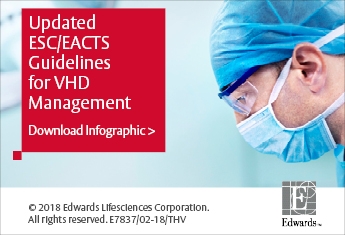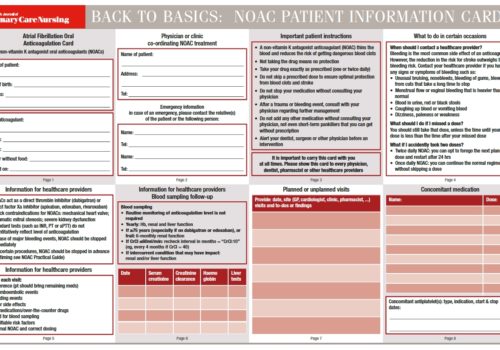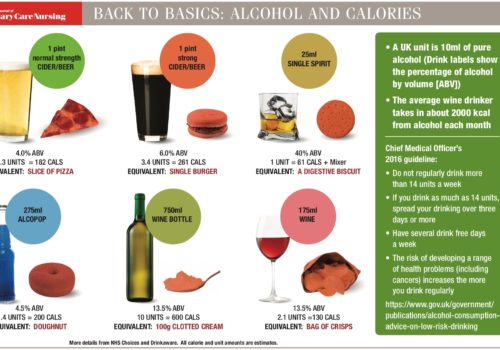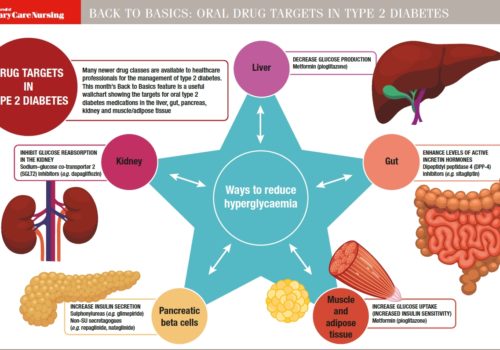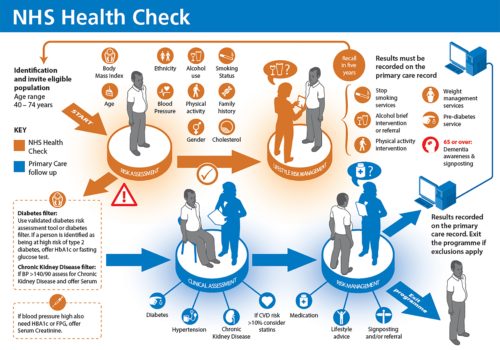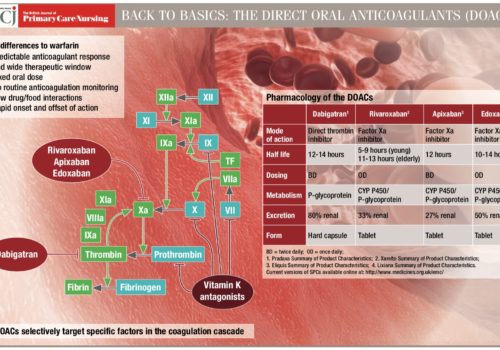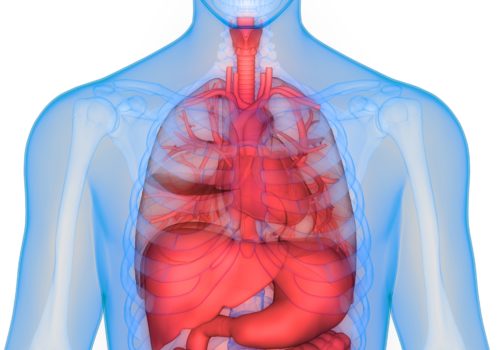ESC/EACTS guidelines for Valvular Heart Disease (VHD) management were updated in 2017 and has since impacted individual patient suitability for Aortic Stenosis treatment. A visual summary of the latest VHD management guidelines is now available. Download yours now!
Back to Basics: NOAC patient information card
This month’s Back to Basics feature is a patient information card that is included in the 2018 European Heart Rhythm Association Practical Guide on the use of non-vitamin K antagonist oral anticoagulants in patients with atrial fibrillation. The card can be folded into pocket size and is crucial both for the patient and for healthcare providers.
Back to Basics: Alcohol and calories
This month’s Back to Basics feature is a useful wallchart showing estimates of alcohol content and calorie counts of typical alcoholic drinks. Many people forget the considerable calorific content of drinks and are unaware of how much pure alcohol they are consuming. Having these facts to hand are useful for the patients we see in practice and for our own healthy living!
Back to Basics: Oral drug targets in type 2 diabetes
Many newer drug classes are available to healthcare professionals for the management of type 2 diabetes. This month’s Back to Basics feature is a useful wallchart showing the targets for oral type 2 diabetes medications in the liver, gut, pancreas, kidney and muscle/adipose tissue.
Back to Basics: The NHS Health Check
This NHS Health Check overview shows the target age groups and risk factors assessed during the process. All these details should be recorded on the primary care record. The overview highlights the risk assessment, lifestyle management, clinical assessment and risk management processes involved in the NHS Health Check.
CVD prevention opportunities here and now
Cardiovascular disease is a much more preventable issue than many healthcare professionals realise. Medical advances, together with reduced premature mortality from CVD and increased life expectancy, means that on top of the demands of an ageing population we are also living ‘less-well’ for longer, and creating a different kind of pressure on services.
Back to Basics: The direct oral anticoagulants (DOACs)
‘Working’ towards better health
The concept of primary prevention of cardiovascular disease is certainly not new, and although much work has been done, there appears to be a drive to think differently about the way in which such initiatives are delivered. The workplace offers a convenient alternative environment to the conventional health care setting where employees can receive health and well-being services, including health checks and educational sessions.
Heart Failure: A syndrome of comorbidity
Heart failure (HF) is a devastating clinical syndrome characterised by a constellation of symptoms and signs in the presence of reduced cardiac function. Comorbidity is almost inherent as HF is often the culmination of chronic disease processes such as ischaemic heart disease, hypertension and valve disease and its treatment may precipitate comorbidities such as gout, erectile dysfunction (ED) and acute kidney injury (AKI).
Case study: Painful diabetic peripheral neuropathy
This case study describes the diagnosis and management of 55-year old man with painful diabetic peripheral neuropathy. He is already receiving treatment for his diabetes but is experiencing burning pain in the soles of his feet, especially at night when lying in bed. He has paresthesia and numbness in toes and his sleep is interrupted because of his condition. He also presents with depression and has a number of diabetic complications and co-morbidities.
Barriers to cardiovascular health in cardiac nurses
Cardiovascular disease (CVD) is the leading cause of death in Ireland and diminishes quality of life and places a burden on health care services. There is little known about CVD with regard to nurses’ health in Ireland. The overall aim of this study was to assess the lifestyle of cardiac nurses working in an acute setting for the first time in Ireland. These findings may have implications for primary care nurses.
Case study: Statin intolerance in a patient with high cardiovascular risk
This case study presents a challenging everyday clinical situation for you to review with guidance from an expert in the field.

